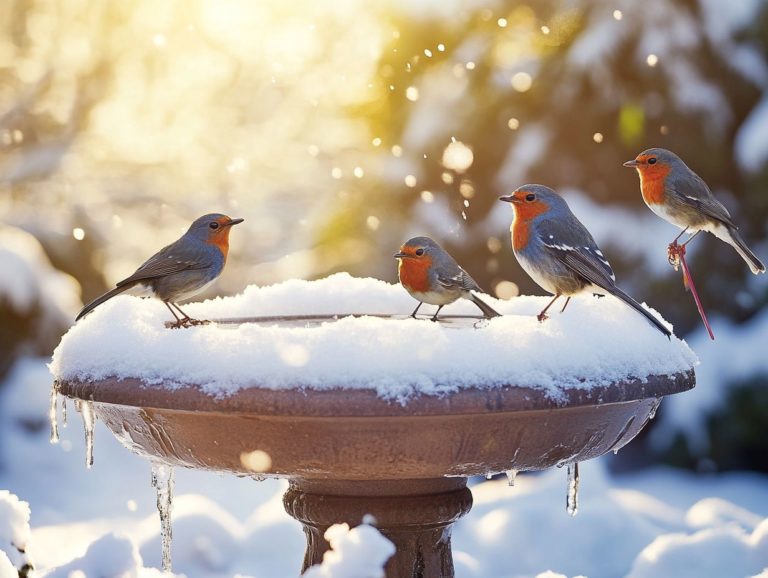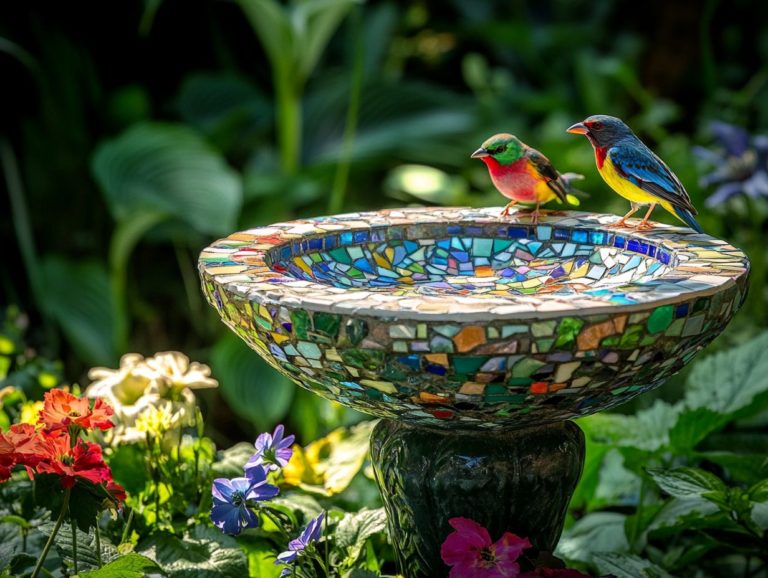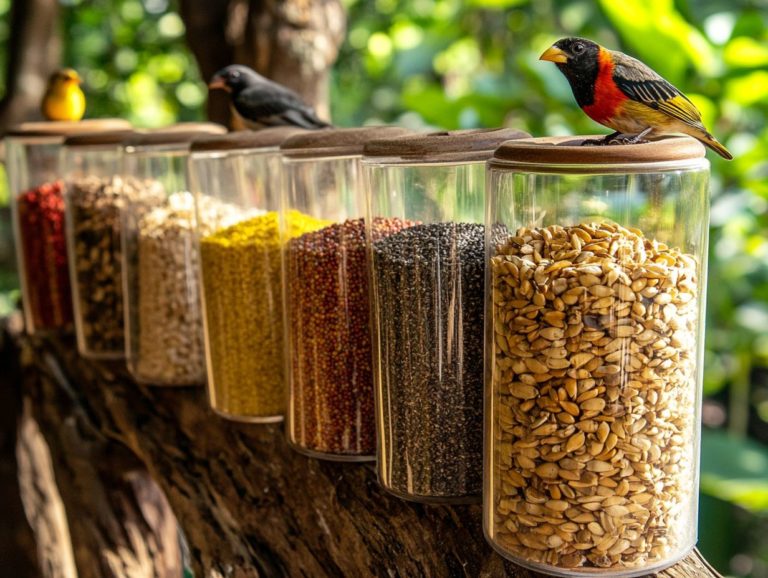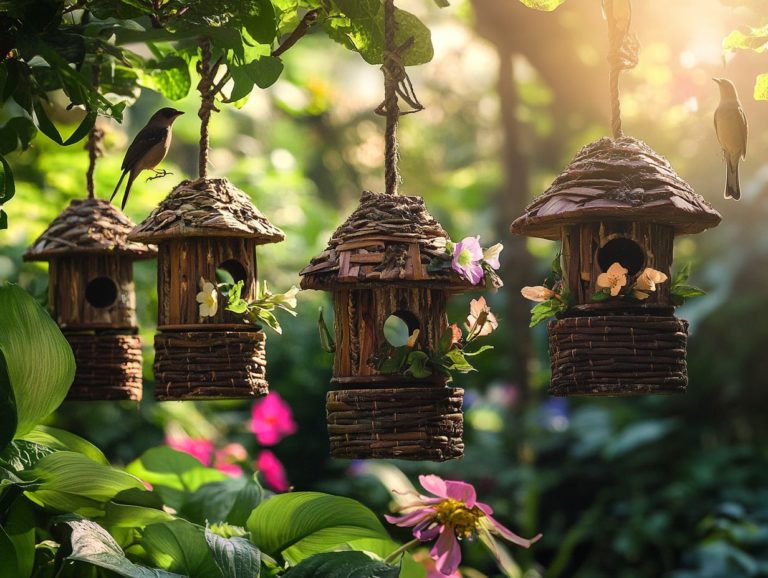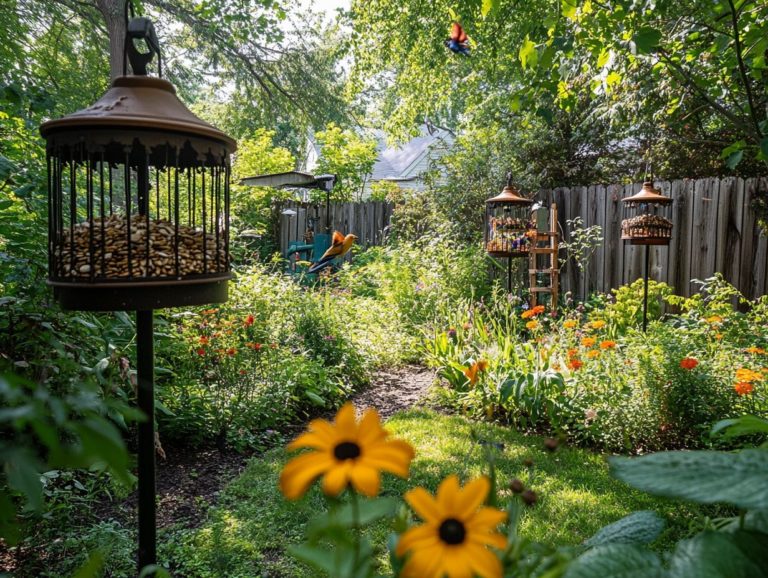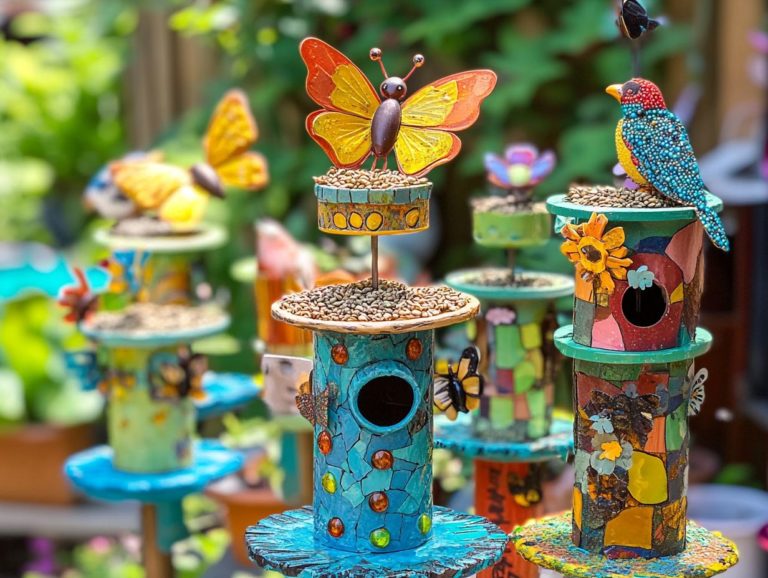How to Make a DIY Bird Feeder
Making a homemade DIY bird feeder is an incredibly rewarding project that not only benefits the birds but also contributes positively to the environment.
You re also providing a vital food source for our feathered friends while embracing a sustainable practice that significantly reduces waste. This guide will equip you with everything you need: the materials required, eco-friendly options to consider, straightforward step-by-step instructions to build your feeder, tips for attracting various bird species, and essential maintenance advice to keep your feeder in prime condition. It makes for a fun family activity.
Immerse yourself in this endeavor and uncover the joy of bird watching right in your own backyard!
Contents
- Key Takeaways:
- Why Make a DIY Bird Feeder?
- How to Choose the Best Materials
- Step-by-Step Instructions
- Tips for Attracting Birds
- Maintenance and Care
- Common Bird Feeder Questions
- What materials do I need to make a DIY bird feeder?
- How do I make a homemade bird feeder using a plastic bottle?
- Can I use any type of birdseed for my DIY bird feeder?
- How can I make a simple DIY bird feeder with my kids?
- What is the best location to hang my DIY bird feeder?
- How often should I refill my DIY bird feeder?
Key Takeaways:
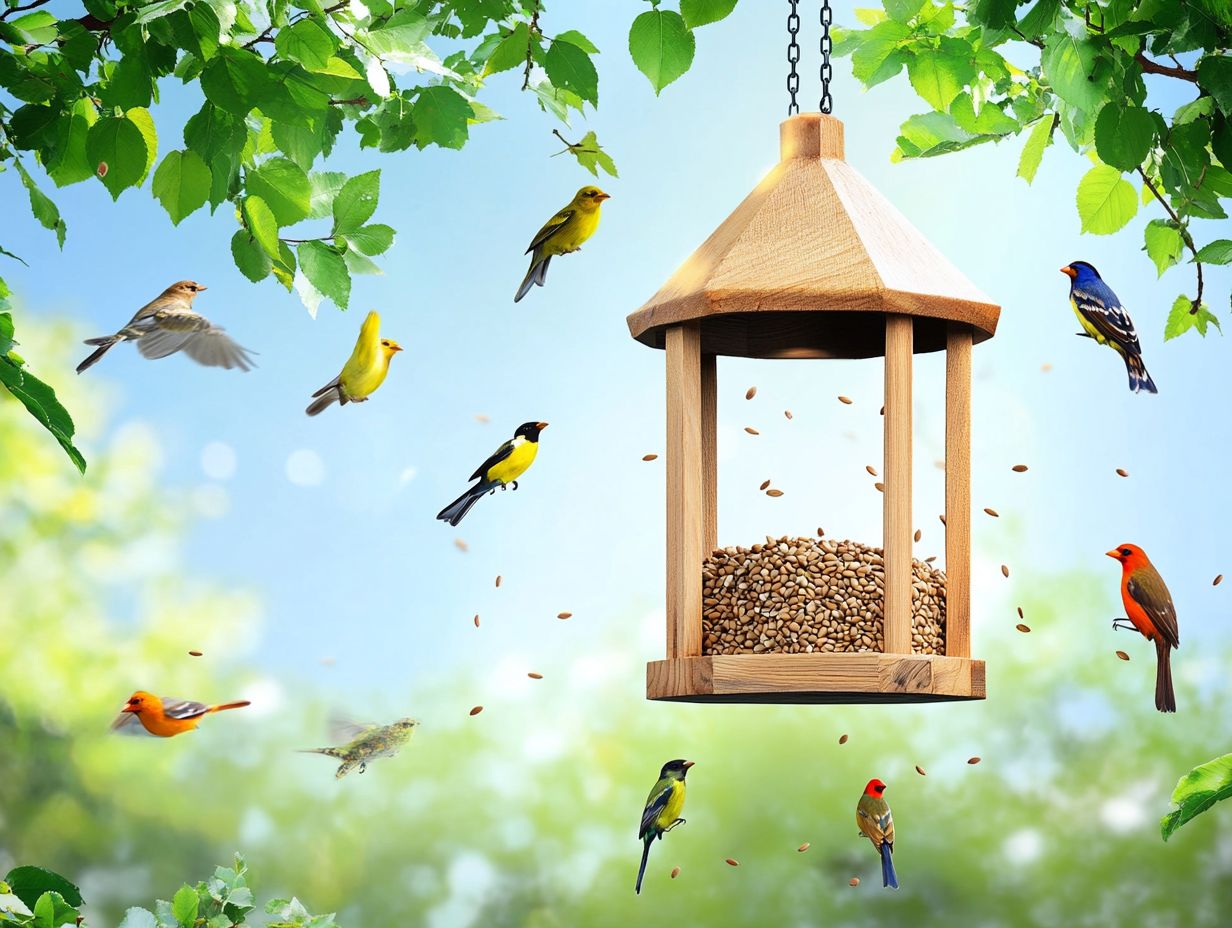
- Save money and help the environment by making your own bird feeder.
- Use eco-friendly and safe materials such as recycled materials to build a DIY bird feeder.
- Attract more birds by choosing the right location, bird seed, and regularly maintaining the feeder.
Why Make a DIY Bird Feeder?
Making a DIY bird feeder is a fantastic way to connect with nature while offering essential nourishment to local bird species. It s not just about feeding the birds; it encourages birdwatching and appreciation among your family, especially the kids.
This fosters a deeper connection with the environment. Whether you choose to go all out with vibrant, painted designs using craft paints or prefer a more rustic approach with natural materials, the entire process can be both enjoyable and enriching.
In your outdoor space, a handmade bird feeder can stand as a charming focal point, elevating your backyard aesthetics and supporting your eco-friendly initiatives.
Benefits for Birds and the Environment
DIY bird feeders offer a wealth of benefits for both birds and the environment. They serve as essential food sources throughout the winter and summer months.
These feeders create a thriving haven for local birds, significantly contributing to the overall health of the ecosystem. By installing bird feeders in your garden or on your balcony, you are supporting local bird populations and promoting biodiversity.
This practice helps you connect with nature and learn why habitat conservation is important. By enhancing your local environment, bird feeders play a pivotal role in maintaining ecological balance and nurturing a vibrant wildlife community.
How to Choose the Best Materials
Selecting the right materials for your DIY bird feeder is crucial for ensuring its durability and safety for the feathered visitors. By opting for eco-friendly choices like recycled materials, you contribute to environmental preservation while crafting a unique, budget-friendly feeder.
With options ranging from milk cartons and pine cones to wood and plastic bottles, your creative endeavor will culminate in a stunning enhancement to your outdoor space. Remember to incorporate decorative elements that harmonize with your backyard vision.
Eco-Friendly and Safe Options
When you embark on the journey of making a DIY bird feeder, prioritizing eco-friendly and safe options is essential to protect the feathered visitors in your outdoor space.
Choosing sustainable materials like reclaimed wood or bamboo helps cultivate a nurturing environment that delights your avian friends and honors the planet. Incorporating natural ingredients in your birdseed like sunflower seeds, millet, and safflower ensures your feathered guests receive nourishment without harmful additives and preservatives.
Avoid toxic substances, including synthetic pesticides and artificial dyes, as they can pose a threat to the health of these delicate creatures. Your commitment to selecting safe, eco-friendly products fosters a thriving ecosystem where birds can flourish.
So why wait? Start your bird feeder project today!
Step-by-Step Instructions
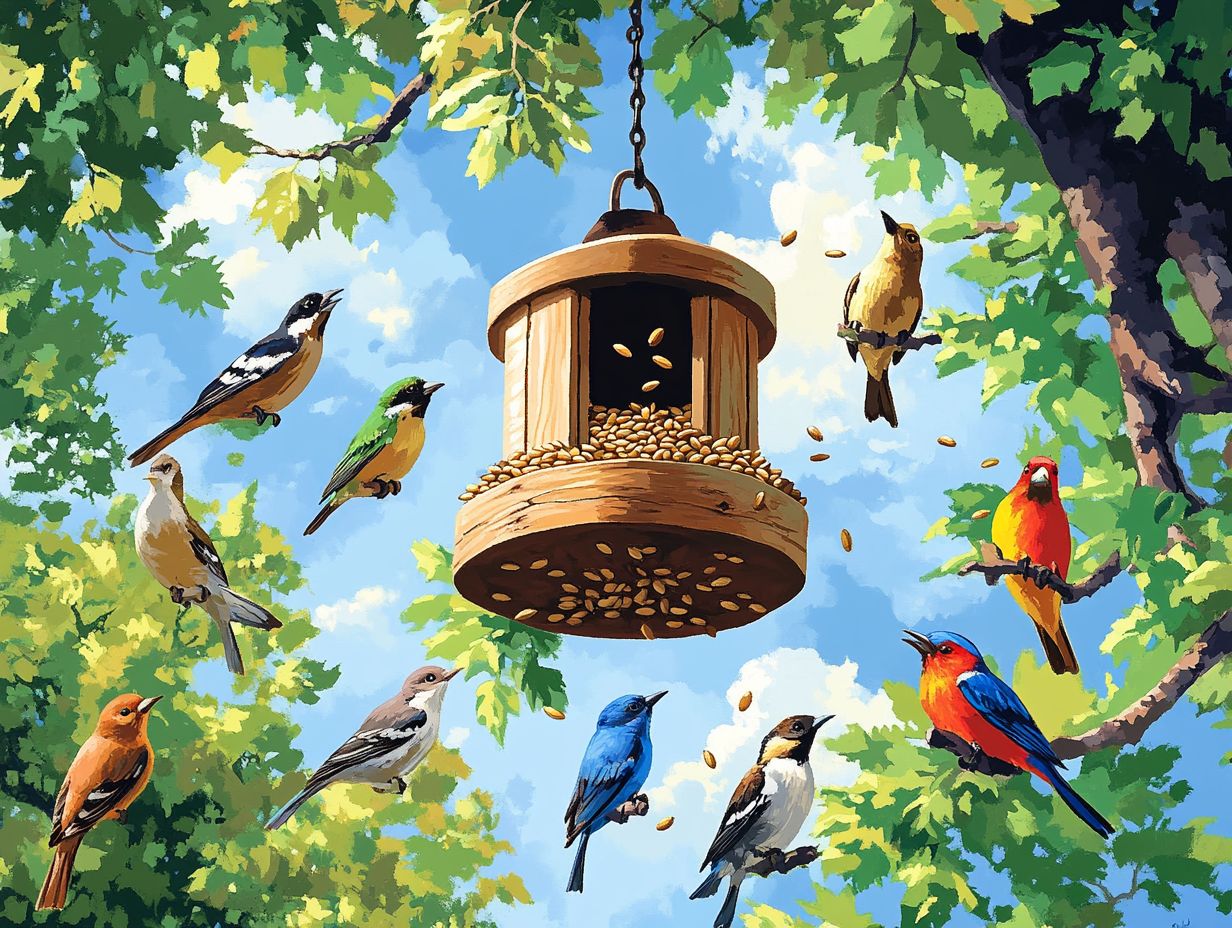
Creating a DIY bird feeder is a delightful project that allows you to unleash your creativity while offering food to your feathered companions. For a more comprehensive approach, check out this guide on how to set up a bird feeder station.
By following straightforward instructions, you can craft an enchanting feeder using everyday materials like twine and craft paint. You can also use recycled items such as milk cartons and plastic bottles.
This endeavor not only helps you spend time with your family especially the kids but also immerses them in the joys of crafting and the wonders of nature. Involving them in sourcing supplies and selecting designs transforms this into a cherished family experience.
Gathering Supplies and Tools
Gathering the right supplies and tools is your first crucial step in this DIY bird feeder project. It lays the groundwork for a truly enjoyable crafting experience.
To ensure you have everything at your fingertips, consider essentials like:
- Wood
- Nails
- A saw
- Paint
- A drill
Each item plays a vital role in creating a functional and aesthetically pleasing feeder. Local hardware stores often have a fantastic selection, but don t overlook online platforms, especially eco-friendly retailers that offer sustainable options like reclaimed wood (wood salvaged from old furniture or buildings) or non-toxic paints.
For an extra touch of environmental consciousness, consider repurposing materials from around your home like plastic bottles or old wooden pallets. Not only does this minimize waste, but it also gives your feeder a unique flair.
Crafting Your Feeder: Let s Get Started!
Building your own DIY bird feeder is an exciting way to express your creativity while keeping things refreshingly simple.
Start by selecting the right materials perhaps some reclaimed wood or a sturdy plastic container. It s crucial that your choices create a safe haven for your avian visitors. Secure the feeder with durable twine, hanging it from a branch where your feathered friends can easily access it.
In terms of decoration, don t miss the chance to add eye-catching patterns with craft paint. Not only does it enhance the visual appeal, but it also adds a protective layer against the elements. Consider patterns or illustrations inspired by nature to further entice birds.
As you assemble the feeder, remember that drilling and sanding are part of the process. Take your time to ensure every piece fits snugly, promoting stability and longevity in your creation.
Tips for Attracting Birds
Attracting birds to your DIY bird feeder involves a touch of strategic finesse. You’ll want to carefully select the ideal location and choose food options that delight local species.
This thoughtful approach will turn your feeder into a vibrant hub of avian activity.
Location and Placement
The location and placement of your bird feeder are crucial in attracting a variety of bird species, making it an essential aspect of your DIY project.
Opt for a spot near trees or shrubs, providing birds with natural shelter and a safe perch while they dine. Position your feeder in areas with minimal disturbances steering clear of high-traffic zones so that birds can feed without feeling on edge.
Consider factors like the type of seeds you offer, the feeder s design, and nearby water sources to enhance your backyard s appeal to diverse species.
By crafting a serene and inviting environment, you ll enjoy the vibrant spectacle of nature while transforming your backyard into a thriving oasis for your feathered friends.
Don t forget to share your unique bird feeder design with us!
Food and Seed Choices
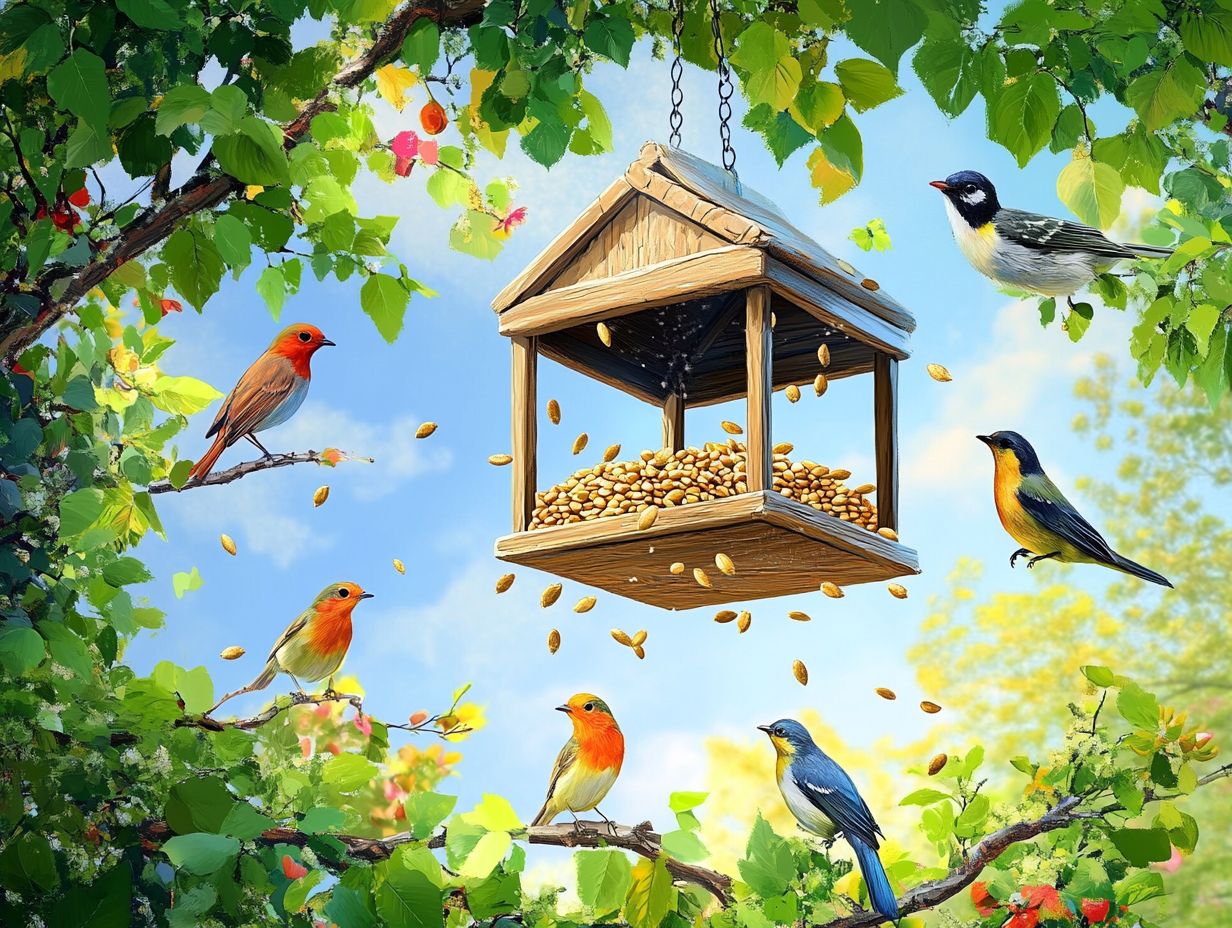
Selecting the right food is crucial for attracting birds to your DIY feeder. Different species have unique dietary preferences.
Explore various options like sunflower seeds and suet. Sunflower seeds are favorites for finches, while millet charms doves and quails.
Don t overlook natural ingredients like peanut butter. These high-energy treats are especially valuable in cold months.
Offering a mix of seeds will cater to a range of tastes. You ll invite a variety of feathered visitors, including hummingbirds and finches.
Pay attention to popular foods in your area. This helps you fine-tune your offerings and maximize bird sightings.
Maintenance and Care
Proper maintenance is essential for your DIY bird feeder. This keeps it inviting and safe for birds year-round, especially in summer.
Cleaning and Refilling the Feeder
Regularly cleaning and refilling your bird feeder keeps it effective. This simple routine is one the kids can help with!
Plan to empty and scrub your feeder every two weeks during peak feeding seasons. Use a mild soap solution and rinse thoroughly.
Refill with fresh seed weekly, or more often if consumption is high. This prevents mold and bacterial growth, protecting the birds health.
Common Bird Feeder Questions
What materials do I need to make a DIY bird feeder?
To make a homemade bird feeder, you will need a cardboard or plastic bottle, a pair of scissors, a strong string or wire, and some birdseed.
How do I make a homemade bird feeder using a plastic bottle?
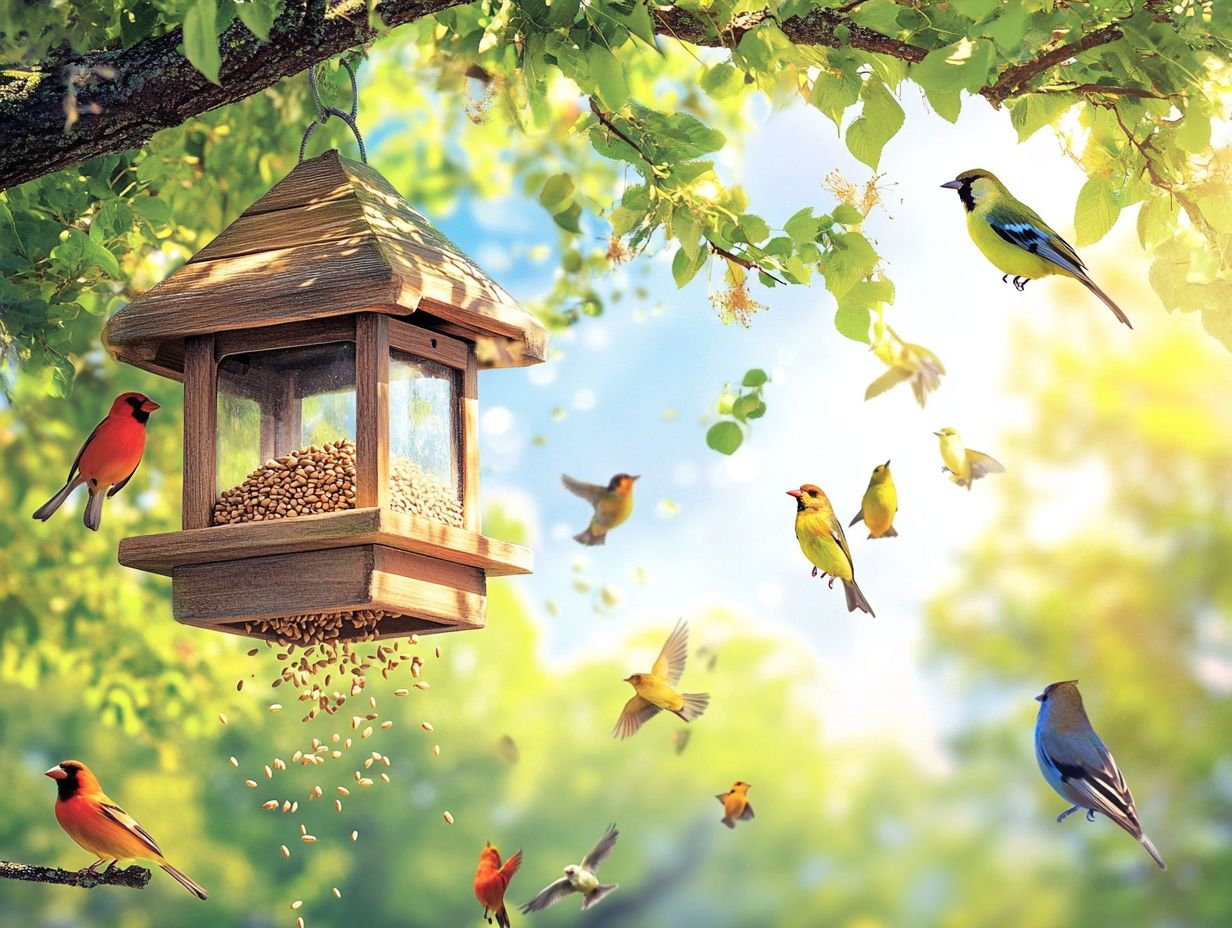
To make a homemade bird feeder using a plastic bottle, start by cutting a hole near the bottom. Poke a few small holes in the cap and fill the bottle with birdseed.
Finally, attach a string or twine to the top of the bottle and hang it outside for the birds to enjoy.
Can I use any type of birdseed for my DIY bird feeder?
Yes, you can use any type of birdseed for your DIY bird feeder. However, a mix of different seeds will attract various bird species.
Consider adding suet a high-energy food made from animal fat and sunflower seeds for extra variety.
How can I make a simple DIY bird feeder with my kids?
You can create a simple bird feeder using a pinecone, peanut butter, and birdseed. Have your kids spread peanut butter on the pinecone and roll it in birdseed.
Finally, tie a string around the pinecone and hang it outside for the birds. This makes a wonderful family activity during the summer months.
What is the best location to hang my DIY bird feeder?
Hang your DIY bird feeder in a quiet, open area, away from potential predators. Ensure it s easily accessible for refilling and cleaning.
Placing it near a bird bath or some twigs can add charm and encourage more visitors!
How often should I refill my DIY bird feeder?
Be sure to refill your bird feeder at least once a week or whenever it’s empty. This keeps the birds fed and prevents the seed from getting moldy.
Check your bird feeder more often during winter months to ensure a steady food supply for your feathered friends!

